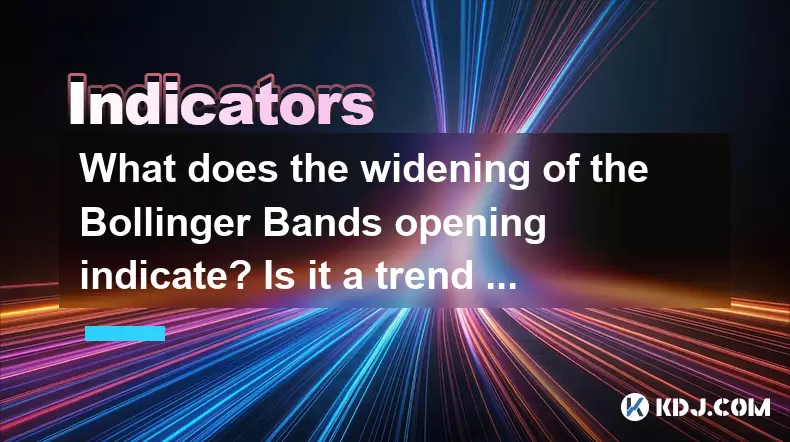-
 Bitcoin
Bitcoin $118000
-2.69% -
 Ethereum
Ethereum $4617
-0.94% -
 XRP
XRP $3.100
-4.95% -
 Tether USDt
Tether USDt $1.000
0.02% -
 BNB
BNB $847.9
0.68% -
 Solana
Solana $195.4
-1.22% -
 USDC
USDC $0.9997
-0.01% -
 TRON
TRON $0.3628
1.01% -
 Dogecoin
Dogecoin $0.2261
-6.42% -
 Cardano
Cardano $0.9229
5.88% -
 Chainlink
Chainlink $22.81
-2.94% -
 Hyperliquid
Hyperliquid $44.85
-1.20% -
 Sui
Sui $3.822
-3.14% -
 Stellar
Stellar $0.4239
-5.48% -
 Bitcoin Cash
Bitcoin Cash $591.3
-4.70% -
 Ethena USDe
Ethena USDe $1.001
-0.02% -
 Hedera
Hedera $0.2523
-3.94% -
 Avalanche
Avalanche $23.94
-4.27% -
 Litecoin
Litecoin $122.9
-5.68% -
 Toncoin
Toncoin $3.421
-1.11% -
 UNUS SED LEO
UNUS SED LEO $9.264
0.24% -
 Shiba Inu
Shiba Inu $0.00001303
-5.26% -
 Uniswap
Uniswap $11.01
-7.86% -
 Polkadot
Polkadot $4.038
-4.21% -
 OKB
OKB $99.10
5.46% -
 Dai
Dai $0.9998
0.00% -
 Bitget Token
Bitget Token $4.600
-2.32% -
 Cronos
Cronos $0.1534
-7.90% -
 Ethena
Ethena $0.7414
-4.15% -
 Aave
Aave $315.3
-2.45%
What does the widening of the Bollinger Bands opening indicate? Is it a trend start?
Widening Bollinger Bands signal increased crypto volatility, often hinting at new trends, but traders should seek additional confirmation before acting.
May 22, 2025 at 09:15 am

The widening of the Bollinger Bands opening is a significant indicator within the realm of technical analysis in the cryptocurrency market. Bollinger Bands, created by John Bollinger, are a volatility indicator that consists of a simple moving average (SMA) and two standard deviation lines plotted above and below the SMA. When these bands widen, it suggests an increase in volatility, which is often interpreted as a potential signal for the start of a new trend. However, understanding the nuances of this indicator is crucial for traders and investors to make informed decisions.
Understanding Bollinger Bands
Bollinger Bands are composed of three lines: the middle band, which is typically a 20-day simple moving average; the upper band, which is the middle band plus two standard deviations; and the lower band, which is the middle band minus two standard deviations. The width of the bands is determined by the volatility of the price. When the price volatility increases, the bands widen, and when volatility decreases, the bands contract.
What Does Widening of Bollinger Bands Indicate?
When the Bollinger Bands widen, it indicates that the price of the cryptocurrency is experiencing increased volatility. This can be due to various factors such as significant news, market sentiment shifts, or large trading volumes. The widening of the bands is often seen as a precursor to a potential new trend. However, it is not a definitive signal of a trend start; it merely suggests that the market is entering a phase of higher volatility, which could lead to a new trend.
Is Widening of Bollinger Bands a Trend Start?
While the widening of Bollinger Bands can suggest the potential for a new trend, it is not a guaranteed indicator of a trend start. Traders often look for additional confirmation from other technical indicators or market signals before concluding that a new trend has indeed begun. For instance, if the price breaks out of the upper band after a period of widening, it might signal the start of an uptrend. Conversely, a breakout below the lower band could indicate the beginning of a downtrend.
How to Use Bollinger Bands in Trading
Using Bollinger Bands effectively in trading requires a systematic approach. Here are some steps that traders can follow:
- Identify the Widening of the Bands: Observe the chart to see if the Bollinger Bands are starting to widen. This can be done by looking at the distance between the upper and lower bands over time.
- Look for Price Breakouts: Once the bands have widened, watch for the price to break out of the bands. A breakout above the upper band might suggest a bullish trend, while a breakout below the lower band could indicate a bearish trend.
- Confirm with Other Indicators: Use other technical indicators such as the Relative Strength Index (RSI), Moving Average Convergence Divergence (MACD), or volume indicators to confirm the potential trend start.
- Set Entry and Exit Points: Based on the confirmed signals, set your entry and exit points for the trade. This could involve setting stop-loss orders to manage risk and take-profit orders to secure gains.
Examples of Bollinger Bands Widening in the Cryptocurrency Market
In the cryptocurrency market, there have been numerous instances where the widening of Bollinger Bands has preceded significant price movements. For example, during periods of high market uncertainty or major announcements, such as regulatory news or technological updates, the bands often widen, signaling increased volatility. Traders who can identify these moments and act accordingly may be able to capitalize on the subsequent trends.
Common Misconceptions About Bollinger Bands
There are several misconceptions about Bollinger Bands that traders should be aware of. One common misconception is that the widening of the bands always signals the start of a new trend. As mentioned earlier, while it can indicate increased volatility and potential for a trend, it is not a definitive signal. Another misconception is that traders should always buy when the price touches the lower band and sell when it touches the upper band. This strategy can be risky without additional confirmation from other indicators.
Practical Application of Bollinger Bands in Cryptocurrency Trading
To illustrate the practical application of Bollinger Bands in cryptocurrency trading, let's consider a hypothetical scenario. Suppose Bitcoin (BTC) is experiencing a period of low volatility, and the Bollinger Bands are relatively narrow. Suddenly, there is a major announcement about a new regulatory framework for cryptocurrencies, causing the bands to widen significantly. Traders who are monitoring the situation might observe the following:
- The price of BTC starts to move upwards, breaking out of the upper band.
- Confirmation from other indicators such as the RSI moving into overbought territory but still showing momentum.
- Increased trading volume supporting the breakout.
In this scenario, traders might decide to enter a long position on BTC, expecting the start of a bullish trend. They would set their entry point just above the breakout level, with a stop-loss order below the lower band to manage risk, and a take-profit order at a level that reflects their analysis of the potential trend.
Frequently Asked Questions
Q: Can Bollinger Bands be used effectively for all cryptocurrencies?
A: While Bollinger Bands can be applied to any cryptocurrency, their effectiveness can vary depending on the liquidity and trading volume of the asset. For highly liquid cryptocurrencies like Bitcoin and Ethereum, the bands tend to provide more reliable signals. For less liquid altcoins, the signals might be less consistent due to lower trading volumes and higher susceptibility to manipulation.
Q: How often should I check the Bollinger Bands for trading signals?
A: The frequency of checking Bollinger Bands depends on your trading strategy. For day traders, checking the bands multiple times a day might be necessary to capture short-term volatility. For swing traders or long-term investors, checking the bands on a daily or weekly basis might be sufficient to identify potential trends.
Q: Are there any other volatility indicators that can be used in conjunction with Bollinger Bands?
A: Yes, several other volatility indicators can complement Bollinger Bands. The Average True Range (ATR) measures market volatility by decomposing the entire range of an asset price for that period. The Keltner Channels, similar to Bollinger Bands, use an exponential moving average and average true range to gauge volatility. Using these indicators together can provide a more comprehensive view of market conditions.
Q: Can the widening of Bollinger Bands be a false signal?
A: Yes, the widening of Bollinger Bands can sometimes lead to false signals. This can occur if the market quickly reverses after a breakout or if the initial widening is due to a temporary spike in volatility that does not lead to a sustained trend. It's important for traders to use additional indicators and market analysis to confirm any signals provided by the widening of the bands.
Disclaimer:info@kdj.com
The information provided is not trading advice. kdj.com does not assume any responsibility for any investments made based on the information provided in this article. Cryptocurrencies are highly volatile and it is highly recommended that you invest with caution after thorough research!
If you believe that the content used on this website infringes your copyright, please contact us immediately (info@kdj.com) and we will delete it promptly.
- Kazakhstan's Crypto Leap: Bitcoin ETF and Central Asia's Digital Finance Future
- 2025-08-13 12:45:19
- BlockDAG Presale Blazes Past $371M: Fundraising Frenzy Fuels Crypto Sensation
- 2025-08-13 13:05:21
- Meme Coins: Chasing the 2025 Surge – Which Will Moonshot?
- 2025-08-13 10:25:23
- Bitcoin's Wild Ride: Rally, Pullback, and What's Next
- 2025-08-13 10:25:23
- Bitcoin, Bitmax, and Institutional Demand: A New Era of Crypto Investment
- 2025-08-13 10:45:12
- Solana, ROAM, and Airdrops: What's the Buzz in 2025?
- 2025-08-13 11:35:13
Related knowledge

What does it mean when the +DI and -DI cross frequently in the DMI indicator but the ADX is flattening?
Aug 11,2025 at 03:15am
Understanding the DMI Indicator ComponentsThe Directional Movement Index (DMI) is a technical analysis tool composed of three lines: the +DI (Positive...

What does the sudden appearance of a "dark cloud cover" candlestick pattern during an uptrend indicate?
Aug 13,2025 at 11:35am
Understanding the 'Dark Cloud Cover' Candlestick PatternThe dark cloud cover is a bearish reversal pattern in technical analysis that typically appear...

What does it mean when the moving average, MACD, and RSI all send buy signals simultaneously?
Aug 11,2025 at 01:42pm
Understanding the Convergence of Technical IndicatorsWhen the moving average, MACD, and RSI all generate buy signals at the same time, traders interpr...

What does it mean when both the KDJ indicator and the RSI show overbought signals simultaneously?
Aug 13,2025 at 11:35am
Understanding the KDJ Indicator in Cryptocurrency TradingThe KDJ indicator is a momentum oscillator derived from the Stochastic Oscillator, widely use...

What does it mean when the price is trading above the SAR indicator but the red dots are densely packed?
Aug 09,2025 at 11:49pm
Understanding the SAR Indicator and Its Visual SignalsThe SAR (Parabolic Stop and Reverse) indicator is a technical analysis tool used primarily to de...

What does it mean when the candlestick chart forms a "Morning Star" but trading volume is sluggish?
Aug 12,2025 at 06:28pm
Understanding the Morning Star Candlestick PatternThe Morning Star is a three-candle bullish reversal pattern commonly observed in cryptocurrency pric...

What does it mean when the +DI and -DI cross frequently in the DMI indicator but the ADX is flattening?
Aug 11,2025 at 03:15am
Understanding the DMI Indicator ComponentsThe Directional Movement Index (DMI) is a technical analysis tool composed of three lines: the +DI (Positive...

What does the sudden appearance of a "dark cloud cover" candlestick pattern during an uptrend indicate?
Aug 13,2025 at 11:35am
Understanding the 'Dark Cloud Cover' Candlestick PatternThe dark cloud cover is a bearish reversal pattern in technical analysis that typically appear...

What does it mean when the moving average, MACD, and RSI all send buy signals simultaneously?
Aug 11,2025 at 01:42pm
Understanding the Convergence of Technical IndicatorsWhen the moving average, MACD, and RSI all generate buy signals at the same time, traders interpr...

What does it mean when both the KDJ indicator and the RSI show overbought signals simultaneously?
Aug 13,2025 at 11:35am
Understanding the KDJ Indicator in Cryptocurrency TradingThe KDJ indicator is a momentum oscillator derived from the Stochastic Oscillator, widely use...

What does it mean when the price is trading above the SAR indicator but the red dots are densely packed?
Aug 09,2025 at 11:49pm
Understanding the SAR Indicator and Its Visual SignalsThe SAR (Parabolic Stop and Reverse) indicator is a technical analysis tool used primarily to de...

What does it mean when the candlestick chart forms a "Morning Star" but trading volume is sluggish?
Aug 12,2025 at 06:28pm
Understanding the Morning Star Candlestick PatternThe Morning Star is a three-candle bullish reversal pattern commonly observed in cryptocurrency pric...
See all articles

























































































